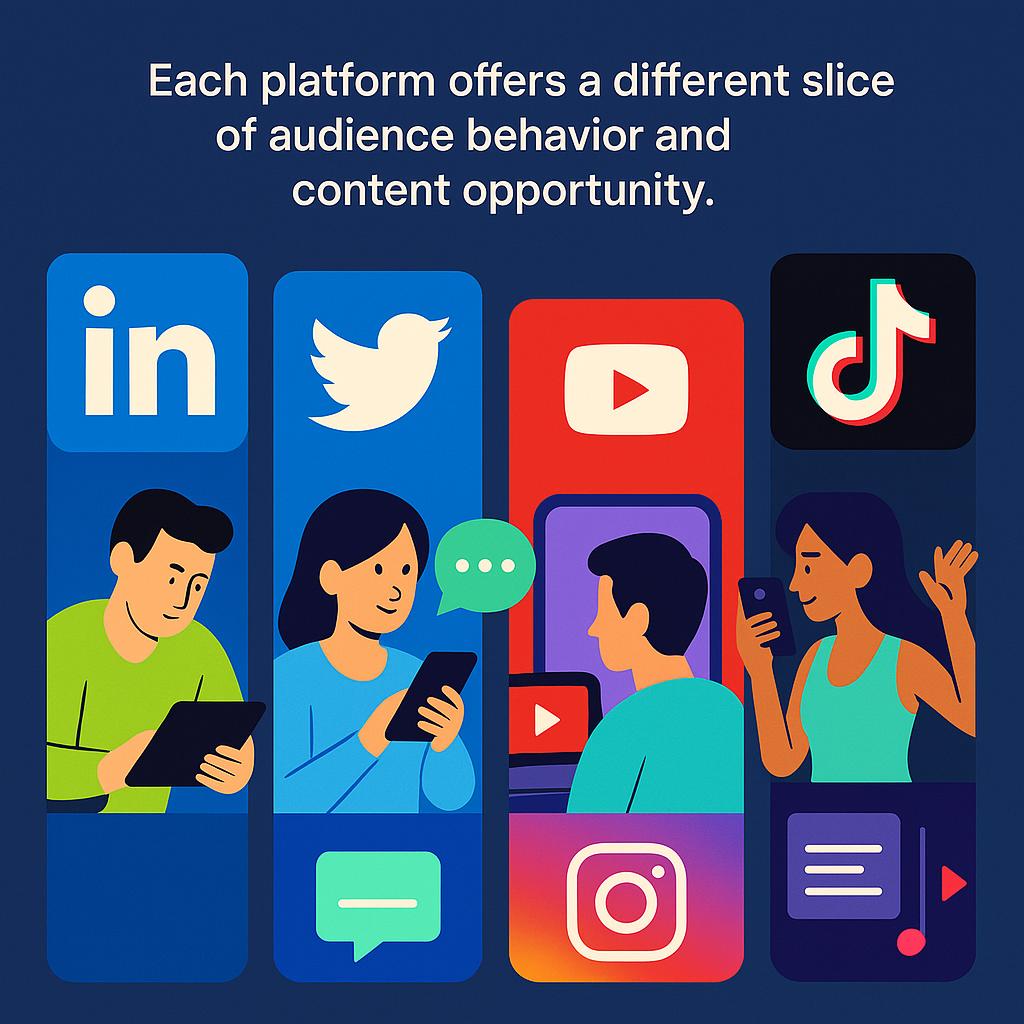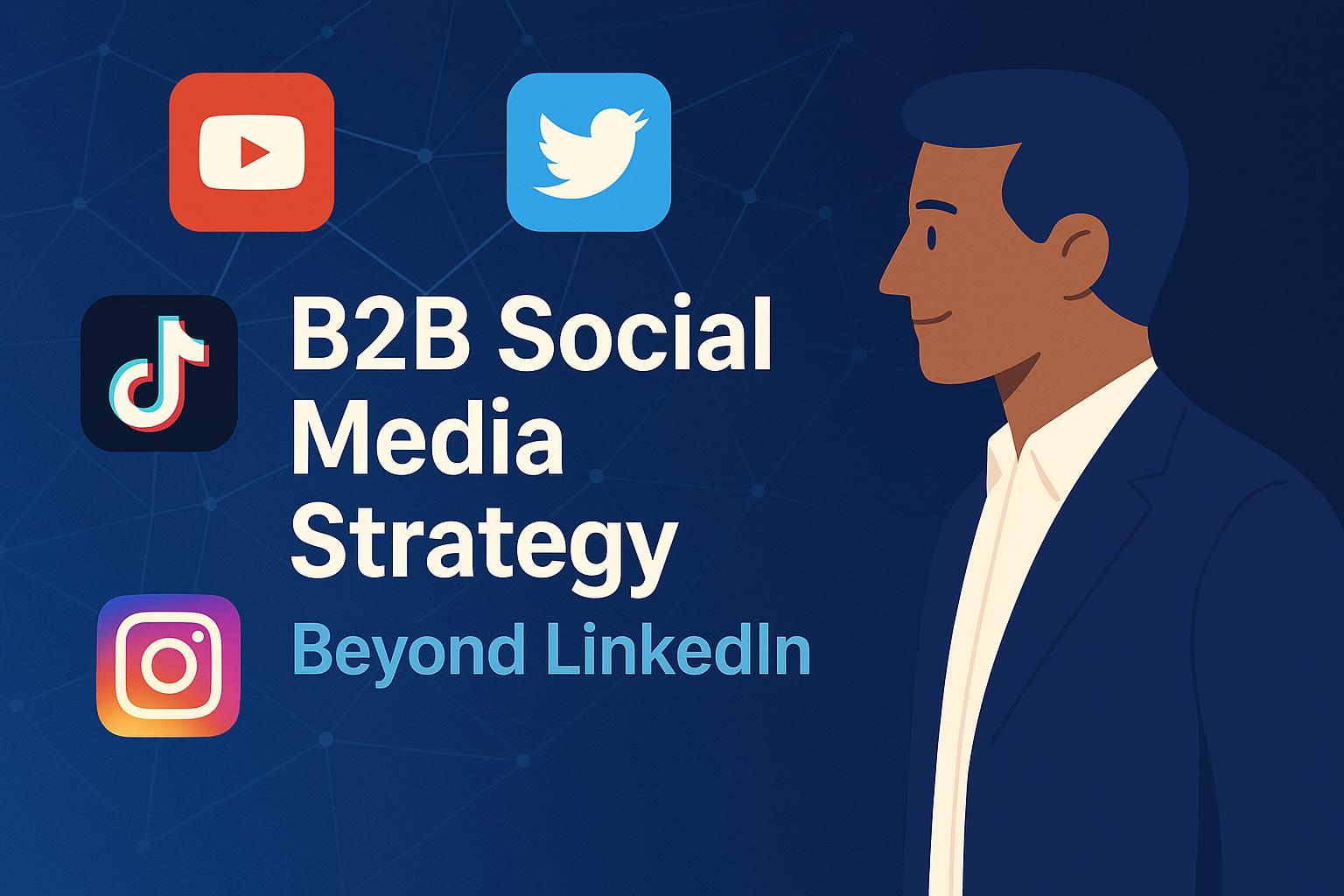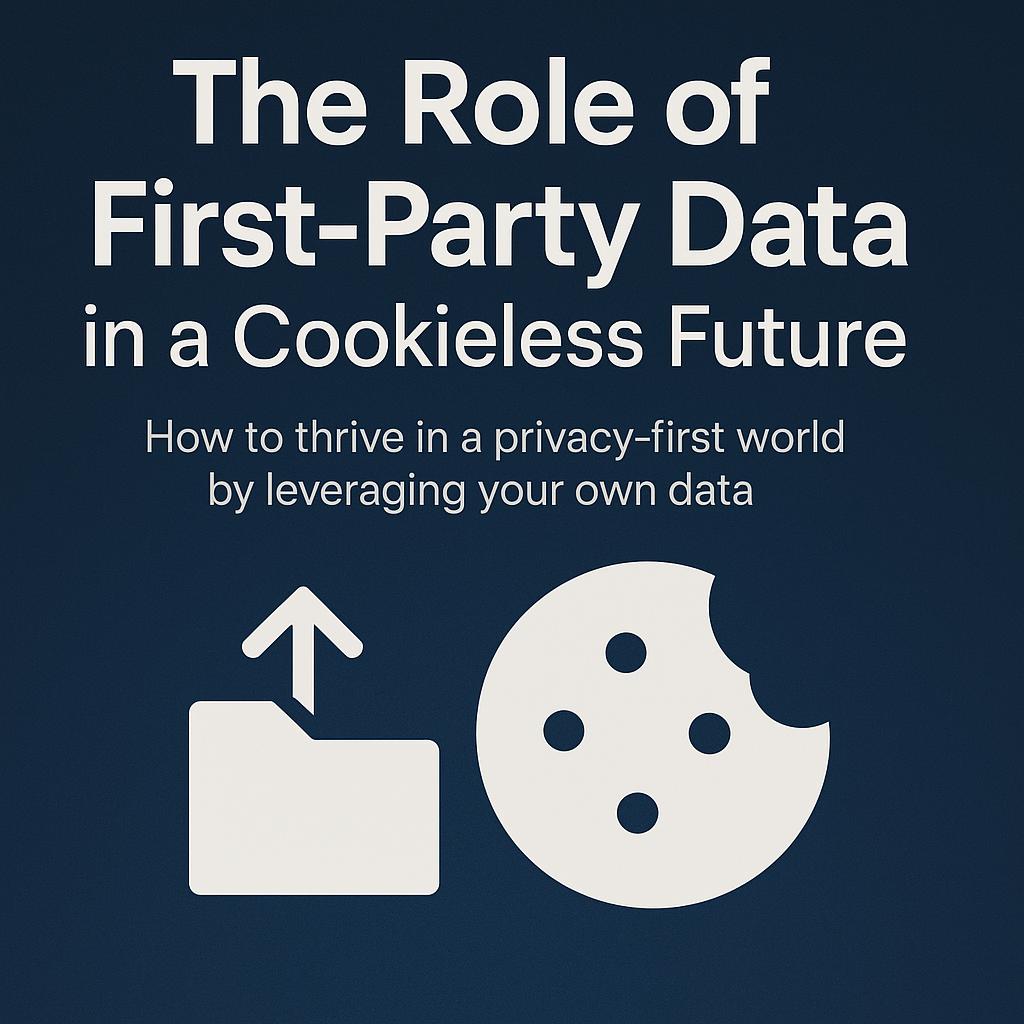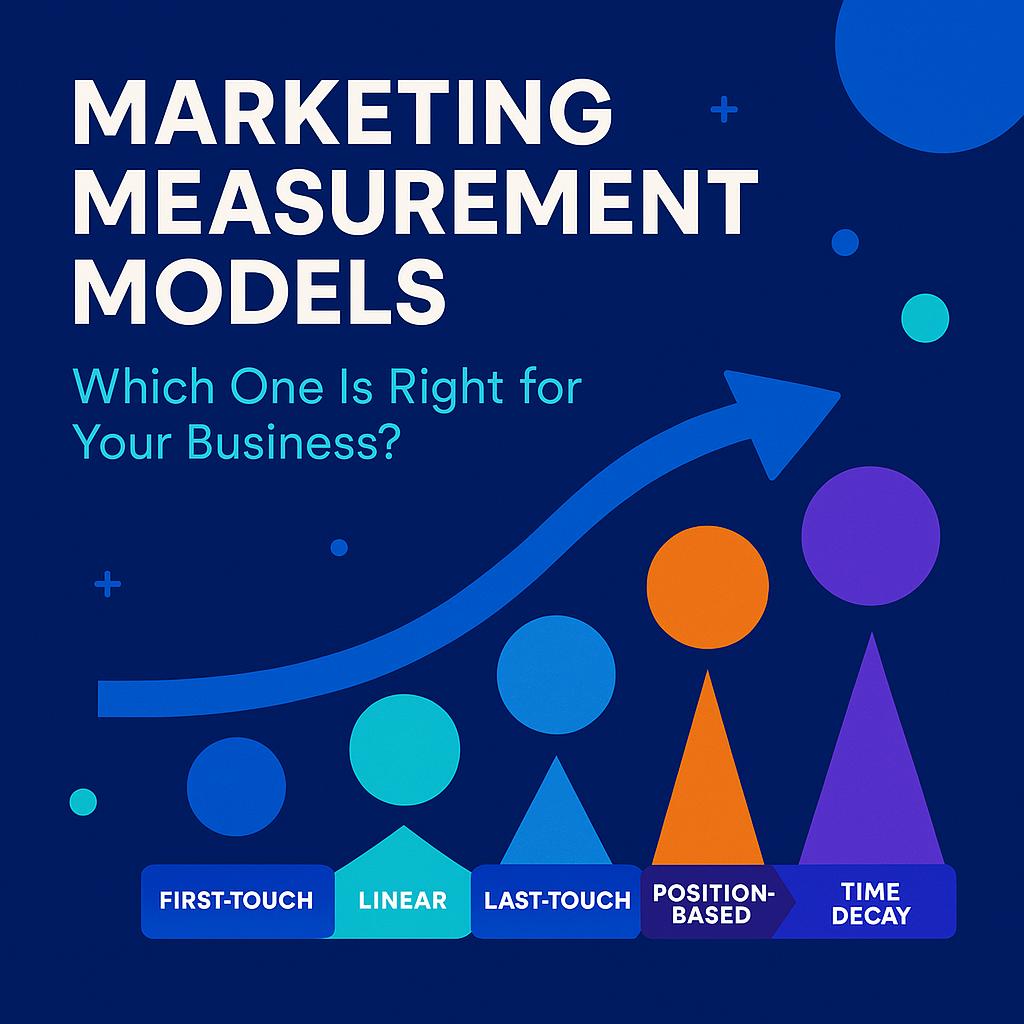When it comes to B2B social media, LinkedIn is often seen as the default platform—and for good reason. But stopping there means missing out on powerful opportunities to reach, educate, and convert your audience across multiple digital touchpoints. B2B decision-makers don’t live on LinkedIn alone. To thrive in today’s ecosystem, your strategy needs to meet them where they actually are.
Why Go Beyond LinkedIn?
While LinkedIn remains essential for professional networking and thought leadership, expanding to platforms like X (formerly Twitter), YouTube, Instagram, and even TikTok can unlock new levels of brand visibility, engagement, and storytelling. These platforms offer unique formats and communities where B2B brands can showcase expertise, build trust, and humanize their offerings.
B2B buyers don’t stop being human when they leave LinkedIn. They scroll, watch, and engage—just like everyone else.

Platform-Specific Strategies
X (Twitter): Thought Leadership & Real-Time Engagement
Use X for timely commentary, industry news, and community engagement. Threads can showcase insights, while spaces and polls can spark conversation. It’s ideal for positioning your brand as agile and in-the-know.
YouTube: Education & Evergreen Content
Create explainer videos, webinars, and product walkthroughs. YouTube is the second largest search engine—optimize titles, descriptions, and thumbnails to reach long-tail queries. Repurpose webinars into short clips or Q&A videos.
Instagram: Visual Storytelling & Culture
Use Instagram to showcase behind-the-scenes moments, team culture, and quick tips. Carousels are great for step-by-step guides. Stories and Reels can humanize your brand and increase reach among younger professionals.
TikTok: Creative Outreach & Brand Personality
Even in B2B, TikTok can shine—especially for recruiting, product education, and creative takes on pain points. Use trends thoughtfully, and focus on authenticity. Success here is less about polish and more about connection.
Audience Targeting Across Platforms
Each platform offers different tools and nuances for reaching your ideal buyer. Use a mix of first-party data, retargeting, and interest-based filters to refine your messaging. Avoid blanket campaigns—tailor content tone and visuals per channel.
B2B audiences can include everyone from end users to C-suite decision-makers. Segment accordingly, and test creative formats to see what resonates with each group.
Content Types That Work Across Channels
Experiment with short-form video, repurposed blog content, and audience-generated responses. Use performance metrics to double down on what works—and don’t be afraid to bring a little personality into B2B.
Metrics that Matter
Beyond likes and shares, track KPIs like engagement rate, website traffic from social, lead quality, and follower growth by persona. Match metrics to your objective—brand awareness vs. lead generation vs. retention.
B2B social media success isn’t just about being seen—it’s about being remembered, trusted, and sought after.
Final Thoughts
Going beyond LinkedIn doesn’t mean abandoning it. Instead, think of it as expanding your strategy into an ecosystem—where each platform plays a specific role in the buyer journey. When you meet your audience where they are and speak their language, B2B marketing becomes far more dynamic and effective.



